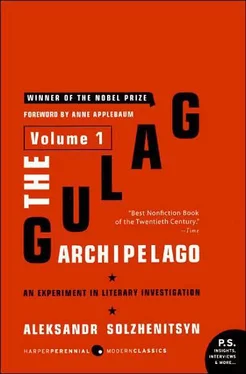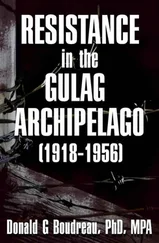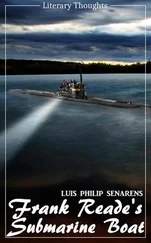Unlike Samsonov, Vlasov did not commit suicide. After his army had been wiped out, he wandered among the woods and swamps and, on July 6, personally surrendered in the area of Siverskaya. He was taken to the German headquarters near Lotzen in East Prussia, where they were holding several captured generals and a brigade political commissar, G. N. Zhilenkov, formerly a successful Party official and secretary of one of the Moscow District Party Committees. These captives had already confessed their disagreement with the policy of the Stalin government. But they had no real leader. Vlasov became it.
9. In reality there was no Russian Liberation Army until almost the very end of the war. Both the name and the insignia devised for it were invented by a German of Russian origin, Captain Strik-Strikfeldt, in the Ost-Propaganda-Abteilung. Although he held only a minor position, he had influence, and he tried to convince the Hitlerite leadership that a German-Russian alliance was essential and that the Russians should be encouraged to collaborate with Germany. A vain undertaking for both sides! Each side wanted only to use and deceive the other. But, in the given situation, the Germans had power—they were on top of the setup. And the Vlasov officers had only their fantasy—at the bottom of the abyss. There was no such army, but anti-Soviet formations made up of Soviet citizens were organized from the very start of the war. The first to support the Germans were the Lithuanians. In the one year we had been there we had aroused their deep, angry hostility! And then the SS-Galicia Division was created from Ukrainian volunteers. And Estonian units afterward. In the fall of 1941, guard companies appeared in Byelorussia. And a Tatar battalion in the Crimea. We ourselves had sowed the seeds of all this! Take, for example, our stupid twenty-year policy of closing and destroying the Moslem mosques in the Crimea. And compare that with the policy of the farsighted conqueror Catherine the Great, who contributed state funds for building and expanding the Crimean mosques. And the Hitlerites, when they arrived, were smart enough to present themselves as their defenders. Later, Caucasian detachments and Cossack armies—more than a cavalry corps—put in an appearance on the German side. In the first winter of the war, platoons and companies of Russian volunteers began to be formed. But the German Command was very distrustful of these Russian units, and their master sergeants and lieutenants were Germans. Only their noncoms below master sergeant were Russian. They also used such German commands as “Achtung!,” “Halt!” etc. More significant and entirely Russian were the following units: a brigade in Lokot, in Bryansk Province, from November, 1941, when a local teacher of engineering, K. P. Voskoboinikov, proclaimed the “National Labor Party of Russia” and issued a manifesto to the citizens of the nation, hoisting the flag of St. George; a unit in the Osintorf settlement near Orsha, formed at the beginning of 1942 under the leadership of Russian émigrés (it must be said that only a small group of Russian Emigres joined this movement, and even they did not conceal their anti-German feelings and allowed many crossovers [including a whole battalion] to the Soviet side… after which they were dropped by the Germans); and a unit formed by Gil, in the summer of 1942, near Lublin. (V. V. Gil, a Communist Party member and even, it seems, a Jew, not only survived as a POW but, with the help of other POW’s, became the head of a camp near Suwalki and offered to create a “fighting alliance of Russian nationalists” for the Germans.) However, there was as yet no Russian Liberation Army in all of this and no Vlasov. The companies under German command were put on the Russian front, as an experiment, and the Russian units were sent against the Bryansk, Orsha, and Polish partisans.
10. These letters became even better known, although, as before, there was still no real Russian Liberation Army. The units were all scattered and kept subordinate to German orders, and the Vlasov generals had nothing to do but play cards in Dahlemdorf, near Berlin. By the middle of 1942, Voskoboinikov’s brigade, which, after his death, was commanded by Kaminsky, numbered five infantry regiments of 2,500 to 3,000 men each, with attached artillery crews, a tank battalion consisting of two dozen Soviet tanks, and an artillery battalion with three dozen guns. The commanding officers were POW officers, and the rank and file was made up, in considerable part, of local Bryansk volunteers. This brigade was under orders to guard the area against partisans. In the summer of 1942, the brigade of Gil-Blazhevich was transferred for the same purpose from Poland, where it had been notable for its cruelty toward Poles and Jews, to the area near Mogilev. At the beginning of 1943, its command refused to acknowledge Vlasov’s authority, demanding that he explain why, in his stated program, there was no reference to the “struggle against world Jewry and Jew-loving commissars.” These were the very men—called the Rodionovites, because Gil had changed his name to Rodionov—who in August, 1943, when Hitler’s approaching defeat became apparent, changed their black flag with a silver skull to a red flag, and proclaimed Soviet authority and a large “partisan region” in the northeast corner of Byelorussia.
At that time, Soviet newspapers began to write about the “partisan region,” but without explaining its origins. Later on, all surviving Rodionovites were imprisoned. And whom did the Germans immediately throw in against the Rodionovites? The Kaminsky brigade! That was in May, 1944, and they also threw in thirteen of their own divisions in an effort to liquidate the “partisan region.” That was the extent to which Germans understood all those tricolor cockades, St. George, and the field of St. Andrew. The Russian and German languages were mutually untranslatable, inexpressible, uncorrelatable. Still worse: in October, 1944, the Germans threw in Kaminsky’s brigade—with its Moslem units—to suppress the Warsaw uprising. While one group of Russians sat traitorously dozing beyond the Vistula, watching the death of Warsaw through their binoculars, other Russians crushed the uprising! Hadn’t the Poles had enough Russian villainy to bear in the nineteenth century without having to endure more of it in the twentieth? For that matter, was that the last of it? Perhaps more is still to come. The career of the Osintorf Battalion was apparently more straightforward. This consisted of about six hundred soldiers and two hundred officers, with an émigré command, I. K. Sakharov and Lamsdorf, Russian uniforms, and a white-blue-red flag; it was thrown in near Pskov. Then, reinforced to regimental strength, it was readied for a parachute drop on the line of Vologda-Archangel, the idea being to make use of the nest of concentration camps in that area. Throughout 1943, Igor Sakharov managed to prevent his unit from being sent against the partisans. But then he was replaced and the battalion was first disarmed and imprisoned in a camp and then sent off to the Western Front. Then, in the fall of 1943, the Germans decided to send the Russian cannon fodder to the Atlantic Wall, and against the French and Italian Resistance, having lost, forgotten, and not even tried to recall its original purpose. Those among the Vlasov men who had managed to retain some kind of political rationality or hope thereupon lost both.
11. They were: the 1st, based on “the Kaminsky brigade,” under S. K. Bunyachenko; the 2nd, under Zverev (former military commandant of Kharkov); half the 3rd; segments of the 4th; and Maltsev’s air force detachment. Only four divisions were authorized.
Читать дальше












